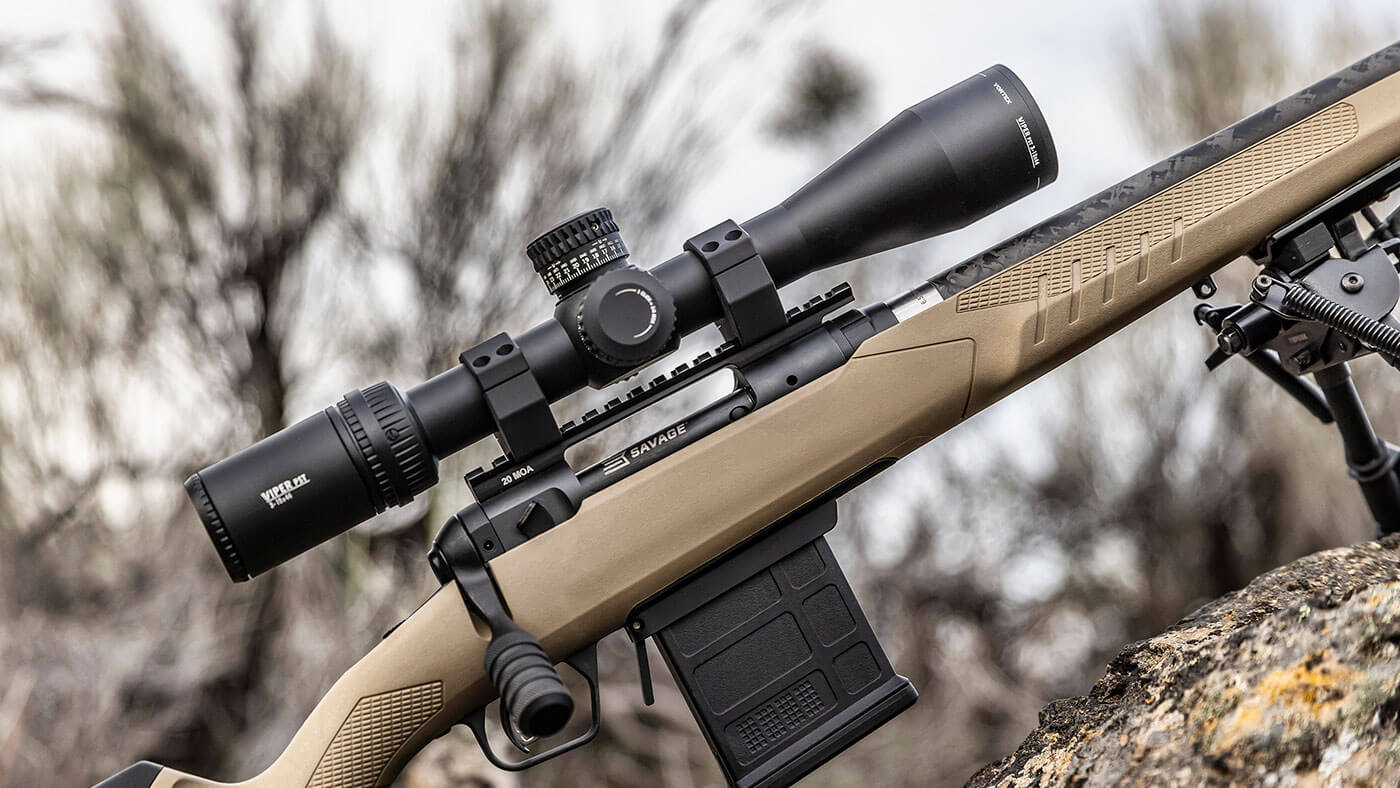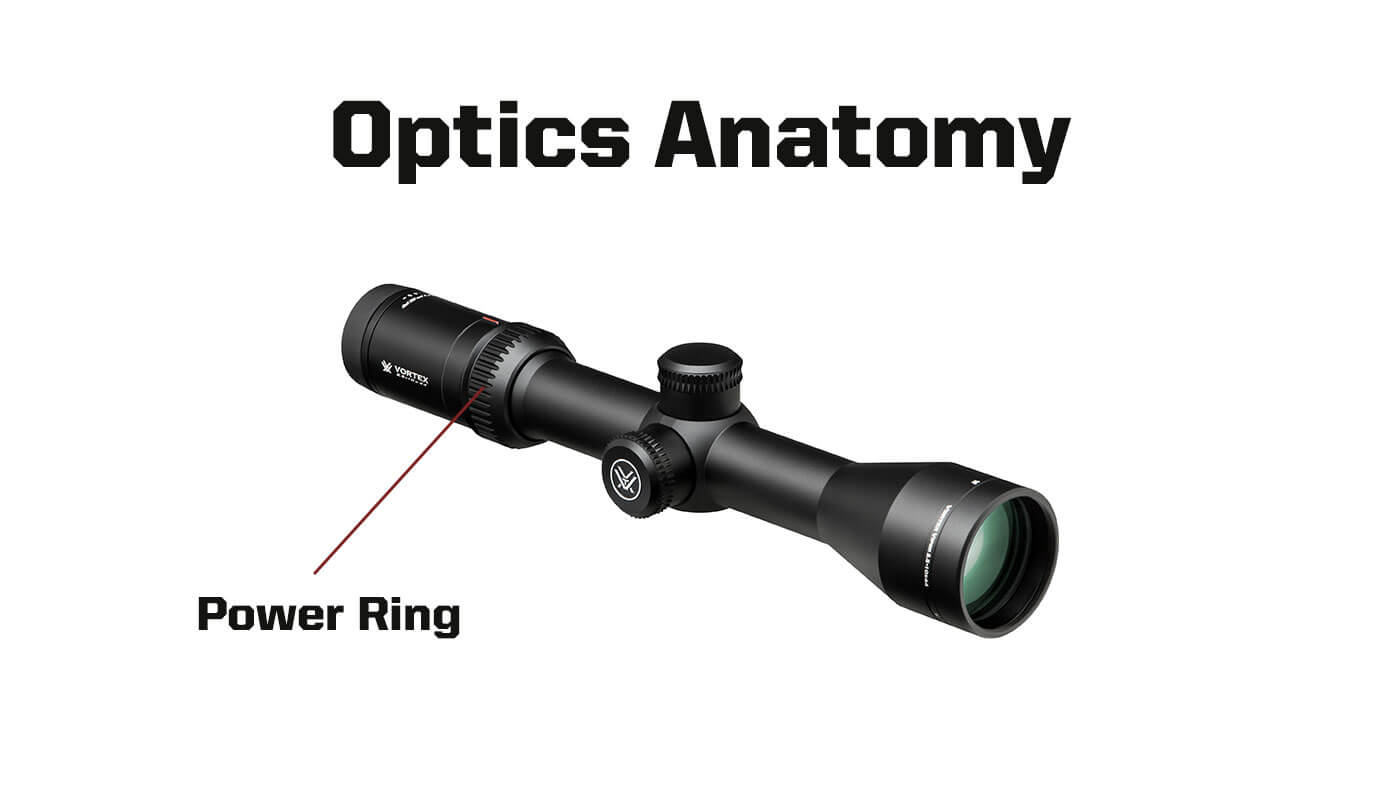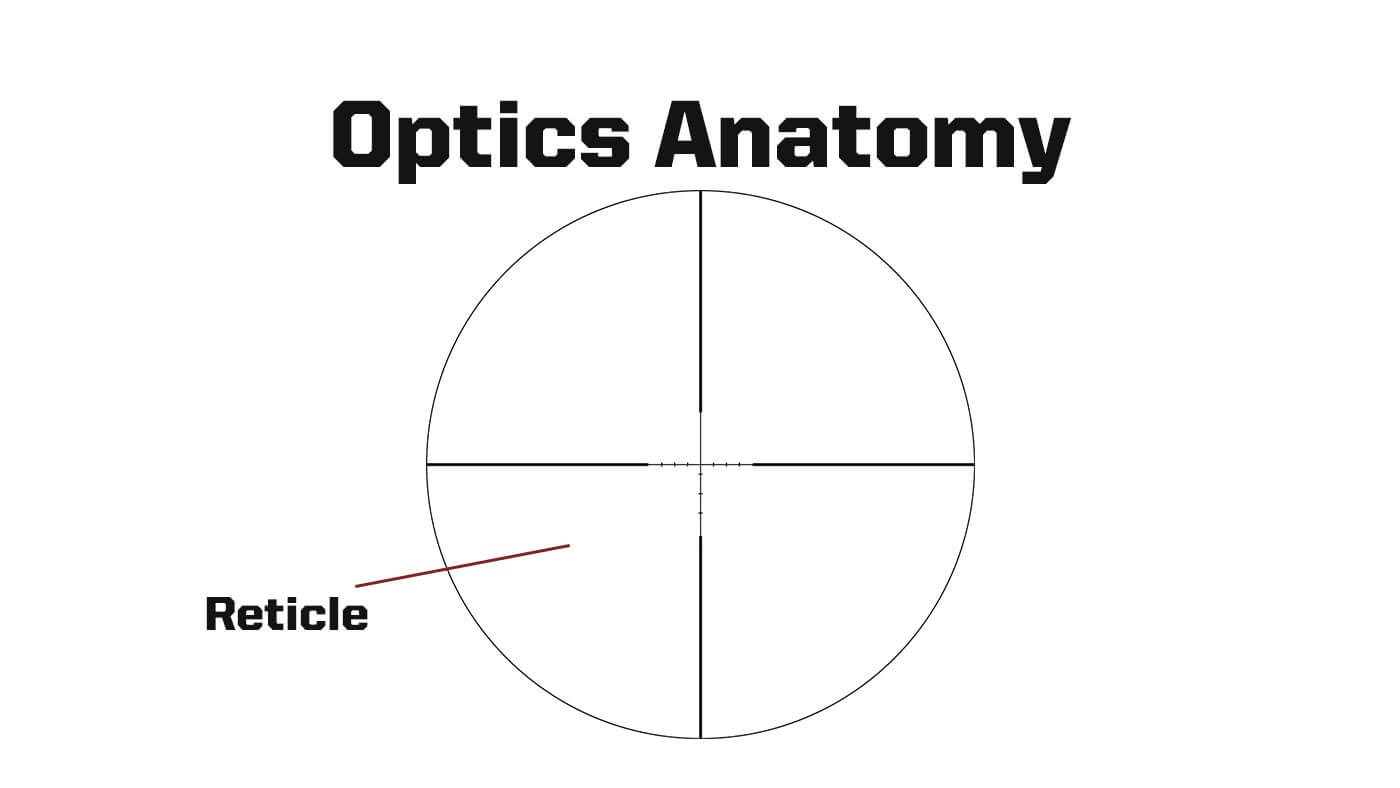- Savage Blog
- Optics Anatomy: Different Parts of a Scope
Optics Anatomy: Different Parts of a Scope

The days of a scope being a scope are long gone, and today's scopes are sophisticated optical systems designed around the concepts of durability and precision accuracy. Here's what you need to know about optics anatomy.
My first scope was simple. Used to iron sights, it was the bee's knees at the time. The fixed 6-power magnification allowed me to better settle my thin-lined crosshair reticle on animals and targets unless the light was too low or bright. Yikes!
Clarity was decent from what I can remember — a few floaties in the glass but nothing I couldn't handle. Bang or clang that scope, though, and it was time to hit the range again. Durability wasn't the best, and it weighed a metric ton.
Times have changed in the optic world, and today's scopes showcase features that put them leaps and bounds ahead of their ancestors. Some of those features include variable zoom, reticle options, lighted reticles, custom dial systems, aircraft-grade housings, and other amenities. Of course, when you're scope shopping, none of this does you any good if you don't understand the different parts of a scope and the purpose of those parts. Here we go.
Magnification
I like to kick things off with magnification. Most popular scopes sport a variable magnification, which means you can zoom the optic in and out by twisting the magnification knob near the eyepiece. The scope's design and purpose will dictate its magnification range. For instance, if the optic is a lightweight model designed for timber-style hunting, the magnification range will likely be 3x9. If the scope is for long-range shooting, the magnification range would be more significant. A popular long-range magnification is 4-15.

Credit: Vortex Optics, Viper HS 2.5-10x44
Housing
The scope's housing is what you see when you look at the optic — it's what covers the glass and all internal parts. The material the housing is built from, and other features like glass quality, variable magnification, and the turret system will dictate the price. Most housings are some form of aluminum, and aircraft-grade aluminum is popular due to its lightweight, durable nature.
Tube
This is the portion of the scope between the eyepiece and flare of the optic housing. The most common tube measurements are 1 inch, 30mm, and 34mm. Knowing tube size is essential for scope mounting. Scope rings, like tubes, are built in various sizes. If you have a 30mm scope tube and 1-inch rings, you won't be able to mount your scope.

Credit: Vortex Optics, Viper HS 2.5-10x44
Reticle
The reticle is a series of defined lines or dots in the eyepiece portion of the scope. While reticle designs were once limited to standard thin-lined crosshairs, they have evolved. Today's reticle designs give the shooter options, and you should consider those options and what purpose you have for your scope before settling. The reticle is the aiming point, and most are either etched in the glass. The most popular reticle options for hunters and target shooters include Duplex, Dot, BDC, Mil-Dot, and Christmas Tree. Reticle options are many, so do your research.

Credit: Vortex Optics, Dead Hold BDC Reticle
Turrets
Scopes have a turret system, which you will use to sight in the scope. The elevation (up/down) turret is usually located on the top of the housing and covered with a cap. The windage (left/right) turret is generally on the scope's right side and is also covered by a cap. Some turret systems have knobs that allow you to turn them, but others will require the use of a small flathead screwdriver or another device.

Credit: Vortex Optics, Viper HS 2.5-10x44
Glass
Few things trump the importance of the scope's glass. The glass is seen in two places — in front of the scope's eyepiece and in front of the scope's housing that faces toward the rifle's barrel. The rest of the glass is stored inside the scope's housing to ensure protection.
Glass quality will affect scope price, and, as noted before, the type of glass you go with should be dictated by the kind of hunting or shooting you plan to do. Clarity and light-gathering ability are the two most important features to consider when looking at a scope's optical system. You want crystal-clear glass and excellent light-gathering ability. Animals move most at dawn and dusk, and if your scope gathers ample light and your reticle is defined, you can make an accurate shot.

Credit: Vortex Optics, Viper HS 2.5-10x44
What do the different optic numbers mean?
Don't worry; it's not as hard as learning another language, and once you understand it, it's pretty simple. For example, let's say you're looking at a 3-9x40mm scope. First, let's break down each number. The 3 is the lowest magnification (zoom) the scope will go. In the optic world, this number is referred to as three power. The 9 is the highest magnification (zoom) in the scope's range, and is referred to as nine power. Most 3-9 scopes allow users to use all magnification powers between three and nine.
Now for the last number. In this case, it's 40, which indicates the diameter of the objective lens. The objective lens is the lens that's furthest from your eye. If you're looking at an unmounted rifle scope, the end you look out of is the eyepiece, and the other end, the most significant part of the glass, is the objective lens. A 3-9x40mm scope would have an objective lens diameter of 40 millimeters. Other standard objective diameters are 42mm and 50mm. The larger the objective lens, the greater the scope's light-collecting power, resulting in a clearer image.
What is an exit pupil?
The exit pupil is simply the diameter of the light beam leaving the eyepiece. The larger the scope's exit pupil, the better its ability to gather light during periods of lowlight. However, more significant isn't always better when it comes to exit pupils. An average human eye pupil opens to a diameter of 5mm to 7mm, and 7mm is the max. If your scope has an exit-pupil diameter greater than 7mm, it will deliver more light than your eye can handle.
You can quickly calculate the size of a scope's exit pupil by dividing the scope's objective diameter in millimeters by its magnification. For instance, if you're looking to purchase a 4-12x50mm scope, divide the 50mm objective by 4, and you will get the scope's exit pupil size.
Do I get a 0 MOA or 20 MOA mounting system?
You may feel like you're back in high school trigonometry when you read the question, but don't fret. MOA is simply an angular measurement. If you choose a 0 MOA rail, your line of sight is parallel to the bore of your rifle, and this is how scopes have been mounted to rifles for decades. A 20 MOA rail manipulates the barrel site relationship. If you go with a 20 MOA rail, your sightline will be downward compared to the bore. This type of mounting system gains unused MOA in your scope, which is a good feature for those wanting to shoot long distances. With the scope facing downward, you get more upward adjustment from your turret system. If you're not looking to shoot long range, a 0 MOA rail is the best choice. A good rule of thumb to follow when deciding on a 0 MOA rail or a 20 MOA rail is if you have 15 minutes of angle or less, you want to go with 0 MOA.
Of course, there's more to scopes, and the deeper you dive, the more informed you will be. This, however, should give you a good jumping-off point. Enjoy the optic process!

